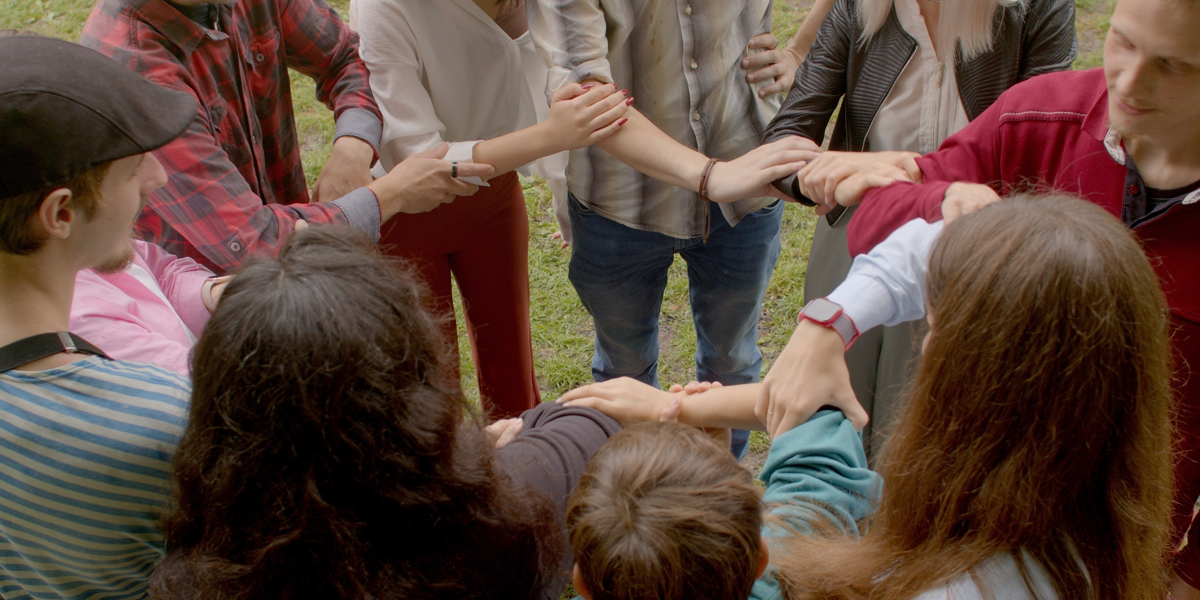If you’re looking for simple team-building trust activities that are not like all the others you have seen – and are probably bored with – you’ve come to the right place.
This article will share seven of my all-time favourite, non-traditional activities that are specifically designed to build and nourish trust among groups of people.
But first, to present these activities well – and by that I mean, present them in a manner that actually builds trust, rather than damage it – I will share my top four tips for creating an environment that will allow trust to flourish.
Four Trust-Building Tips
You know trust is very fragile. It can take a long time to build and often does. Yet, any trust you may have developed could evaporate in the blink of an eye.
If you follow these four tips in any program that aims to develop trusting and healthy relationships, you will more likely taste success.
1. Make it Fun
One of the most powerful lessons I have learned during the course of my 30-year career is that there’s no fun, people find it difficult to engage. This is especially true for those activities which are likely to threaten or embarrass people. Set the scene with a carefully sequenced (see tip below) series of activities that, first, invite your group to play, laugh and interact. Even the simplest of outrageously fun activities, such as Walk & Stop and Cocktail Party will help build a willingness among your group to participate in the more dedicated, yet simple team-building trust activities.
2. Establish Clear Working Agreement
You want to invite your group to create a set of expectations about what is and isn’t acceptable. This includes behaviours as much as general attitude and language. Your primary responsibility is to create an environment in which every person can feel comfortable to make appropriate choices. Otherwise, they will simply pull-back from participating fully, and this is no recipe for building trust.
3. Honour Choice
You can learn more about the powerful philosophical framework of choice here, but in short, honour people’s choices. If your group is having fun and you have worked hard to create a ‘safe’ learning environment, people are more willing to have a go rather than sit out or pull-back from participating. None of us likes to be forced to do anything, so help people feel that they have complete control over the level of challenge they wish to engage within your program.
4. Sequence Carefully
Much like cooking a cake, if you botch the sequence of your ingredients, you’ll spoil your results. Sequencing is all about carefully picking the right activity at the right time. You can learn more about how to sequence your program activities by following the GRABBSS model of assessment. For trust building purposes, take particular note of the Goals, Readiness and Affect elements of the model.
Top 7 Non-Traditional Team Building Trust Activities
Most of the following activities also double as a list of wonderful team building activities with no materials, which just makes it even easier for you to present. That said, most of the props are pretty simple and easy to get your hands on.
Beware, when thinking about building just – don’t just focus on physical activity. Emotional, social and mental trust are all equally important and must be nourished and developed gently too. To this end, I share a wide variety of trust exercises below.
1. Climer Cards
I’ll start this list with one of the more passive, yet still powerful trust-building ideas. There are dozens of ways I use these cards to build trust, but here is one to get you started. Grab a pack of Climer Cards or any set of colourful images (cut out of newspapers and magazines) and lay them on the floor or table and gather your group around them. Pose a question, such as Look for a card that reflects who you are feeling right now? or Pick a card that captures the hope you have for our group moving forward, etc. Break into pairs or smaller groups to share intimately. Repeat several times, with different people, and you’ll feel the trust ratchet up just a little.
2. Blind Portraits
A classic in the making. Hand a sheet of paper and a pen to every person, and then divide into pairs. Instruct each person to look only at the face of their partner as they use their pen to draw their partner’s likeness on their paper. Give them 20-30 seconds to complete their portrait and then, and only then, allow everyone to look at their paper. You can expect this exercise to be fun, but also a powerful opportunity for two people to feel more comfortable with each other, especially when they have to gaze into one another’s eyes for an extended period.
3. Are You More Like
Download the freely available Are You More Like cards (see under Resource tab) and once printed and cut out, randomly distribute one card to every person. Invite your group to mix and mingle in an effort to find their ‘opposite.’ For example, one person holding CAT will be searching for someone with the card DOG. Once obvious partners have been formed, ask each person to share with their partner which one they are more like, in this case, a cat or a dog. Re-distribute the cards and start again.
4. Lean Walk
This is a great example of sports team building activities. Divide your group into pairs of people who are roughly the same height. By way of demonstration, ask for a volunteer and ask them to stand next to you but leaning slightly into your shoulder. Shift your feet comfortably away from your partner and then attempt to walk forward, maintaining your lean against your partner. Experiment with multiple partners, shifting feet closer and further away, etc. Once again, the sense of vibrancy and trust will be palpable, not only during the exercise but – if sequenced carefully – at the end.
5. Human Spring
Another fabulous activity for pairs. Why pairs so often – because trust is built incrementally and working with just one other is the ideal environment. This exercise can be particularly physically challenging so be sure to prepare your group adequately before launching into it. In a nutshell, this exercise involves two people ‘falling’ towards the other and catching their fall by pushing against the hands of the other above their heads. Checkout out the video tutorial to get a sense of what this looks like in real life.
6. Paired Shares
It’s very hard to be left out of a pair, as I say. This means a two-person group is a perfect environment for building something as precious and delicate as trust. Divide your group into pairs and then pose a series of questions you would like each pairing to share with their partner. Start easy and get a little more challenging with each question. Don’t rush it, allow plenty of time for people to share.
7. Pairs Compass Walk
Another classic paired activity. This time, take your group outside where they can safely walk for long distances. We all think we can walk in a straight direct line to something with our eyes closed, but for many of us, this is not true. While one person is walking blind, the has their eyes open to keep them safe. Complete the exercise several times, perhaps even with different partners. There’s something powerful about closing our eyes and trusting another person with our safety that skyrockets our feelings of vulnerability and security. Be sure to debrief these topics once the exercise is complete.
No Comments

No Props No Problem
Best-selling book featuring 150+ fun group games & activities. Scan QR codes to access digital content including videos.

NEW – EMOJI Cards
Brand new deck of cards featuring emoji images to help you inspire conversations about emotions, feelings & experiences.
Top Ten Icebreakers & Group Games
Download our free 28-page ebook jam-packed with outrageously fun activity ideas.
Just one more question:
I am interested in…
Simple Team Building Trust Activities
Share this with friends and colleagues.
Choose a plan that’s right for you
We offer a range of membership plans with no surprises.
Click an option below & discover our simple pricing.

Individual
Click here if you’re a:
- Teacher
- Corporate trainer
- Outdoor educator
- Camp leader
- Youth leader
- Conference organiser
- Therapist/counsellor
Membership Plans

Enterprise
Click here if you represent a:
- School
- Corporation
- Community-based Organisation
Explore plans for
10, 50, 200 or more
potential users
Membership Plans









Original post July 2020, last updated November 2020.